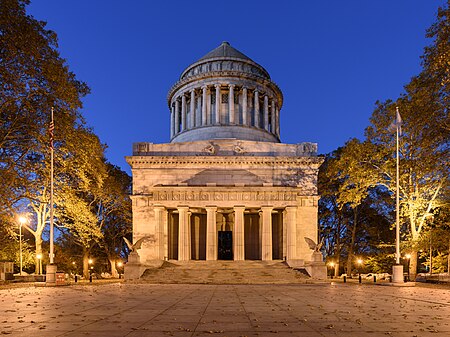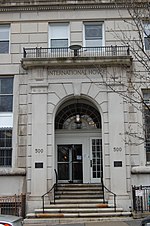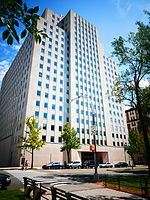Grant's Tomb

Grant's Tomb, officially the General Grant National Memorial, is the final resting place of Ulysses S. Grant, 18th president of the United States, and his wife, Julia Grant. It is a classical domed mausoleum in the Morningside Heights neighborhood of Upper Manhattan in New York City. The structure is in the middle of Riverside Drive at 122nd Street, across from Riverside Church to the southeast and Riverside Park to the west. Upon Grant's death in 1885, his widow declared he had wished to be buried in New York, and a new committee, the Grant Monument Association, appealed for funds. Progress was slow at first, since many believed the tomb should be in Washington, D.C., and because there was no architectural design to show. Eventually they selected a proposal by John Hemenway Duncan for a tomb of "unmistakably military character," modeled after the Mausoleum of Halicarnassus with twin sarcophagi. The tomb was completed in 1897, and the National Park Service has managed it since 1958. After a period of neglect, it has been restored and rededicated. The mausoleum is a prominent architectural land feature visible from the Hudson River. Grant's Tomb is generally open to the public from Wednesdays through Saturdays. In addition to being a national memorial since 1958, Grant's Tomb was added to the National Register of Historic Places in 1966 and was designated an official New York City landmark in 1975.
Excerpt from the Wikipedia article Grant's Tomb (License: CC BY-SA 3.0, Authors, Images).Grant's Tomb
Riverside Drive, New York Manhattan
Geographical coordinates (GPS) Address External links Nearby Places Show on map
Geographical coordinates (GPS)
| Latitude | Longitude |
|---|---|
| N 40.813333333333 ° | E -73.963055555556 ° |
Address
General Grant National Memorial (Grant's Tomb)
Riverside Drive 501
10024 New York, Manhattan
New York, United States
Open on Google Maps








